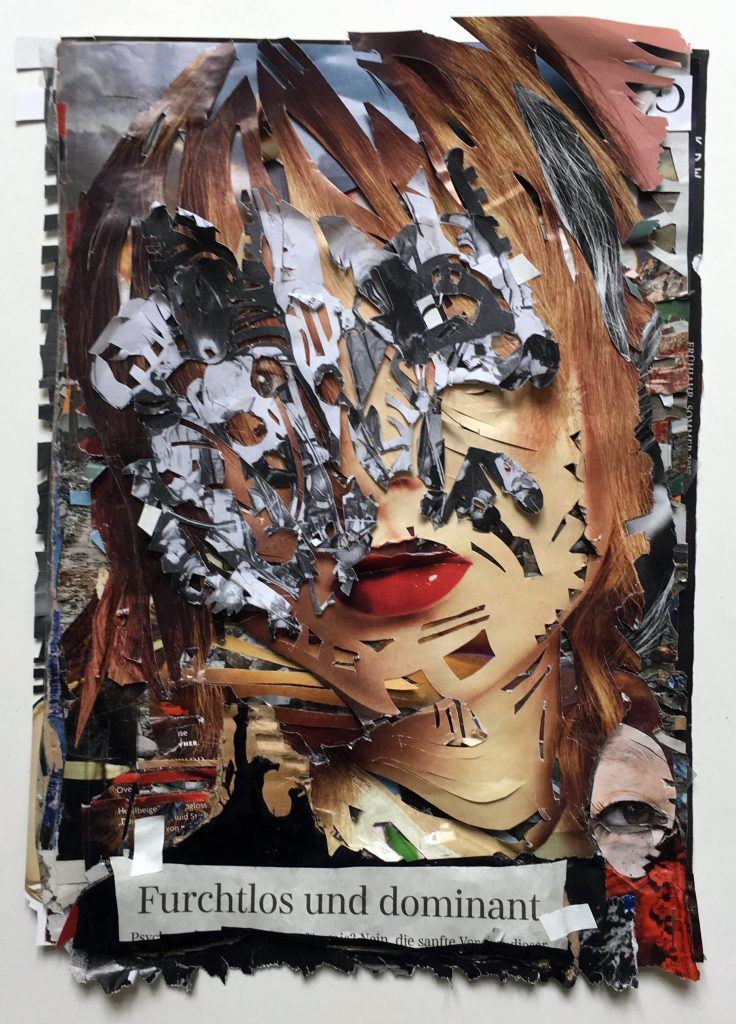by Andrea Scrima
Alyssa DeLuccia’s Letting You in on a Secret is an eloquent artistic inquiry into present-day politics, the media, and contemporary life—one that takes the form of a visual essay operating within the disturbance pattern of a subtle but crucial shift in medium that multiplies and compounds the power of the work and its message.

DeLuccia uses contemporary print media as raw material, fracturing the images and rearranging visual themes to create collages, which she then photographs. And for several important reasons, it’s the photograph and not the installed collage that is the final work of art. The media-reflective dimension of Letting You in on a Secret—the fact that it is based on print media, but locates its final manifestation in the realm of the photographic image intended not for mass-media reproduction, but for the reflective, contemplative context of the exhibition space—speaks to the dire state of imagery and language in the current media landscape and the need to find new methods to assess, decipher, and analyze conflicting and competing information. The new mistrust in the reliability and trustworthiness not only of the means of distribution through news channels, editorial boards, and social media, but in the veracity of the words and images themselves has, on a very basic level, changed the way in which we perceive and engage with the information raining down upon us. Read more »
